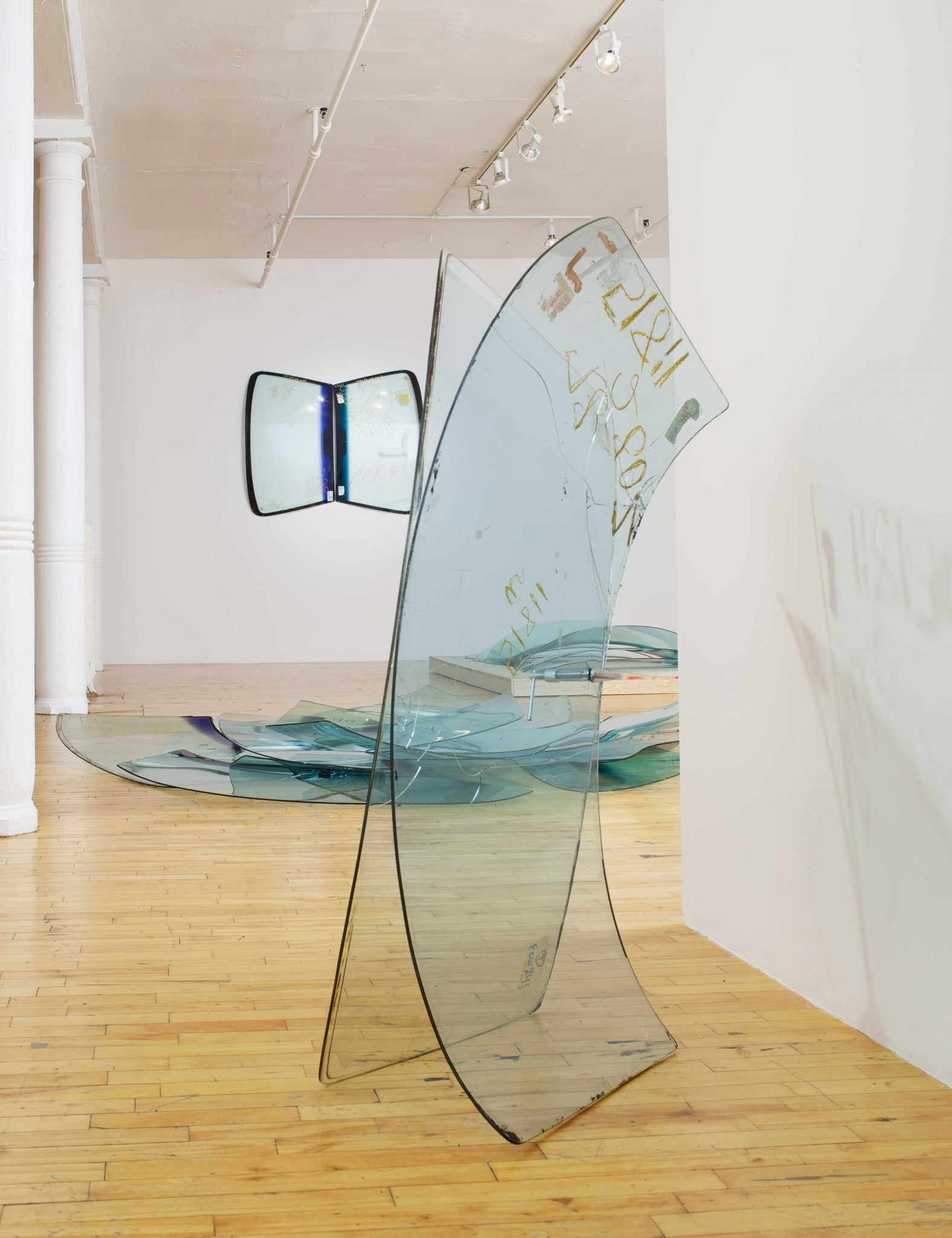There’s not much to Mariposas Migratorias. Eight large-scale sculptures by Mexican artist Martin Soto Climent, constructed entirely out of car windshields of varying shapes and sizes. The overall conceit too obvious: the pieces, bearing names like En Vuelo (In Flight) (all works 2013) and Revoloteo (Flutter), are meant to represent butterflies in various stages of life. Without context, they look like minimalist heaps of glass artfully arranged on the floors and walls of the tiny gallery, as if simplified reincarnations of Robert Smithson’s Map of Broken Glass (Atlantis) (1969). They are quite lovely nevertheless. In the high light of mid-afternoon, the seemingly weightless glass refracts sunlight onto the white walls of the gallery, painting them with other- worldly streaks of blue and green.
Soto Climent almost exclusively uses repurposed materials in his practice. The idea is that, from even the most industrial of human waste, art objects can be created. For this exhibition he bought the windshields at a car- parts shop in the Bronx. The materials are lent nuance by the frits on their top edges, deep bands of colour that prevent the seal between glass and frame from melting when installed in a vehicle. On the surface of many of them remain crude markings made with mustard yellow and pink wax crayons, denoting price and model.
Mariposa (Butterfly) is a wall sculpture consisting of two windshields – one with a deep emerald tint at the top, and other with indigo – connected at their narrowest edges. The gap between them is a body; the spread of their surface, wings. The writing becomes the unique pattern on a new breed of nonorganic butterfly, if you fall for the title. In actuality, it looks like graffiti; the writing serves to add colour to a relatively flat sculpture that, by virtue of its placement on the wall, is deprived of reflected light.
The markings are less prominent in Chrysalis (Verde/Green) and Chrysalis (Azul/Blue), two sculptures consisting of two windshields each, which lean side-by-side against a wall. In these works, it is the frits that make the patterns. The rounded, delicate shape of the cocoon is neatly implied by the gentle curves of the layered glass; the works themselves look like riot shields.
Upon close examination, fissures abound on the glass. In Mariposa Rota (Broken Butterfly), such imperfections were made by the artist, who cracked the sides of two windshields so that they would take the shape of the 90-degree angle between the wall and the floor. In Enjambre de Mariposas (Swarm of Butterflies), the largest work in the exhibition, 15 windshields are layered on the floor in such a way that they take the shape of a lotus flower. Under the weight, edges towards the centre splinter but do not break. From a distance, however, such flaws in the material disappear. Whether this art, in its mimicry of nature, enlightens in a Kantian sense doesn’t seem to matter much. The sculptures seem content being nothing more than beautiful.
This article was first published in the April 2013 issue.
